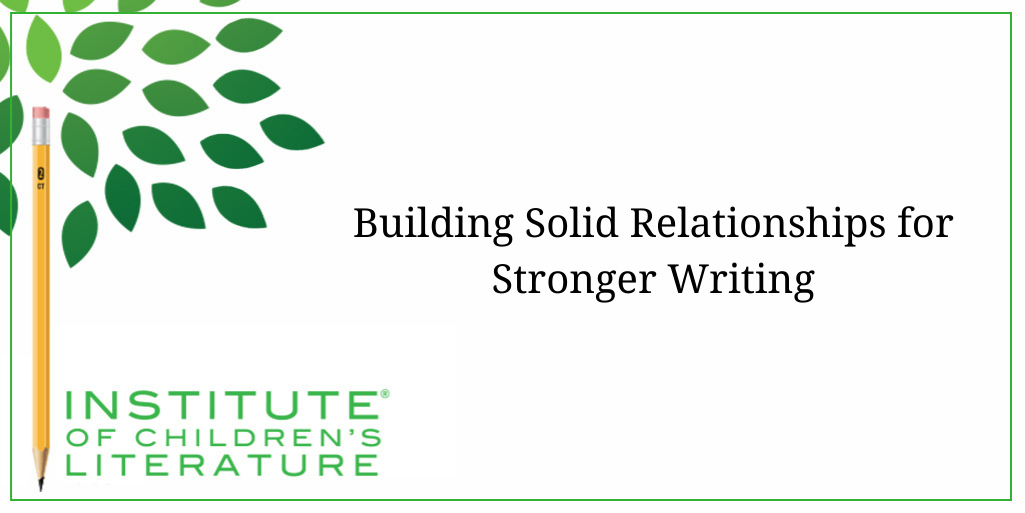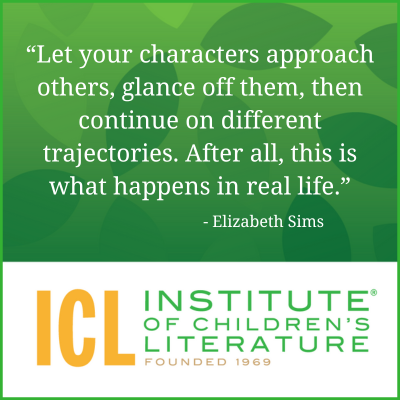
5 Ways Writers Can Prep for 2025 Goal Setting
Before we roll on to the new writing year, let’s harness our optimism for the blank slate before us and prepare for our 2025 Goal Setting just for writers.

Relationships are core to human life, but they’re also central to most fiction and even some nonfiction (biographies, for example). Well-thought-out relationships make fiction more believable. They can be a huge help in getting plots moving. And they play a part in character transformation much of the time. So, thinking about the kinds of relationships you have in a story will help you create something lasting and engaging for the reader. Understand this: creating realistic relationships in your writing is going to take some work, but building those relationships makes for strong writing in the long run.
Sometimes when we talk about relationships, we default to romantic relationships, but stories are full of all sorts of relationships. A kid has a relationship with his parents, his siblings, his friends, his teacher, and more. Some are more important in his life than others, but there are many. One reason why I try to limit the number of characters I deal with in any given book (and especially in any given scene) is that I have to be thinking about all these people and all these relationships if I’m going to build a scene that is believable and makes sense.

Now imagine your main character says something witty, but maybe the grandfather considers the remark sassy. We’ve created the grandfather with the trait of strictness. Now we must think about how that trait plays out with his relationships. Maybe he corrects the main character. Maybe, then the grandfather criticizes the dad for raising a sassy kid. What will the dad say? Will he defend his kid? Defend himself? And how about the mom? Maybe she’s the one to stand up since it’s not her dad who is correcting her kid. And how do the interactions affect the main character and how he sees these family members? Any time you add more people and more relationships, you add more things for you to keep track of in the story. One pro tip is to keep as few people in a scene as possible.
I was recently reminded of how ignoring this tip can make my life harder. I wrote a scene that seemed smooth enough and logical in the outline. But it resulted in grandparents, assorted siblings, and grandchildren all in a scene where a police officer comes in and disrupts a family function. I had to think of how the relationships between the people might affect their responses. A sassy character might tone herself way down around her parents. A normally deferential character might speak up if he feels his fiancé is being ganged up on. And as I looked at the web of all these relationships, the scene became very difficult to write. And even more difficult to write in a way that didn’t lose the reader. It taught me the value of strong characters with clearly defined relationships but also the danger of having too many of those characters in a scene at one time.
We’ve talked before about the importance of having characters who have both strengths and weaknesses, but it’s also important to think about the strengths and weaknesses in the relationships between the characters. Let’s think about the adult characters I cited earlier, the man and his father. Their relationship clearly has some weaknesses. The man has trouble standing up to his father in a mature way. The father also has trouble respecting his son as an adult. But the relationship also has strengths. The father loves his son, even if he doesn’t totally understand him. The son loves his father and doesn’t want to hurt him.

This is one reason why it’s important to think about the strengths and weaknesses of your characters. For your friend characters, why are they friends? Is it mostly proximity? They live next door to one another. Their parents are friends. And they don’t really have anything against one another. They simply like different things. One is into books and video games. The other is into sports and action movies. This means the relationship is extremely fragile. If one of them moves away, the relationship will be over. They won’t write, text, or visit. And maybe there will be some guilt if the mom asks if her son has texted his friend, but the boys might be fine with letting it go.
But this also means if I want the boys to stay friends, I’m going to have to change the way I’ve created the kids and thus how the relationship is held together. Maybe the boys didn’t think they had much in common, but through absence, they discover there was a lot more there than the boys knew. Maybe the sports boy sort of liked it that his friend always told him about the books he was reading and misses that. Maybe Halloween is coming and the bookish boy is reminded that Halloween was the holiday where their relationship shined because they both loved dressing up and weren’t above a few harmless pranks. For this to work, I need to know about these hidden strengths all along, even if the characters themselves took them for granted.
Because characters change, relationships do as well. In fact, the inability for a relationship to adapt to changing circumstances is part of what defines a weak relationship. It’s also often the death of a relationship. If you have two friend characters and a new kid moves to school and befriends one of the two characters, you have a potential problem. Will the friendship of two be able to expand to three? Does it need to? Can these kids have friends that they don’t have in common? Whatever happens, this new change in the situation is going to bump against the relationship and test it.

And just as positive relationships can break apart, sometimes what looks like a negative relationship can change into something much better. Two kids who were thrown together because of proximity or friendships of the adults in their lives might not like each other much at first, especially if they are either very different or very much alike.
But sometimes, what looked like an enemy can turn into a friend. The whole idea of enemies becoming something else is a trope in romantic fiction, so why not try using it in fiction that isn’t romantic? It can be fun to take what might be considered an overused trope in romantic fiction and turn it into something fresh by building a nonromantic relationship. Trying a challenge like that can especially charm editors as they see something they know has been popular being used in a whole new way. Publishing loves that sort of thing.
As the writer, you need to know these characters and their relationships deeply. You need this so that the actions and dialogue that appear on the page follow logical rules growing out of who the characters are and the backstory of what they’ve meant to one another. That doesn’t mean the reader needs all of this explained to them. Sure, you might have a passing thought where one character rolls her eyes and whispers to a friend, “She thinks she’s all that.” But you don’t want to follow up with a recitation of every negative interaction the characters have ever had. Give your reader a chance to figure out what’s going on between these characters from the actions and dialogue on the page. Be subtle. The less you spell out, the more the reader has to invest in the story. If you want readers to care deeply about these people who were born in your head and heart, then make the reader work a little. Investment builds attachment.
So know everything, but use it only to help you write better. As the author, you always need to know so much more than ever gets to the page. But that’s how it should be. Creating is hard work, but when you do it well, you make it easy for the reader to fall in love. And that’s what we want most.
With over 100 books in publication, Jan Fields writes both chapter books for children and mystery novels for adults. She’s also known for a variety of experiences teaching writing, from one session SCBWI events to lengthier Highlights Foundation workshops to these blog posts for the Institute of Children’s Literature. As a former ICL instructor, Jan enjoys equipping writers for success in whatever way she can.

Before we roll on to the new writing year, let’s harness our optimism for the blank slate before us and prepare for our 2025 Goal Setting just for writers.

Writers can be thin-skinned when it comes to getting feedback on their work. Let’s look at 4 ways to positively deal with constructive criticism!

Rejection is part of the territory when it comes to being a writer. Today we offer reflection for writers to help redirect your efforts after a rejection.
1000 N. West Street #1200, Wilmington, DE 19801
© 2024 Direct Learning Systems, Inc. All rights reserved.
1000 N. West Street #1200, Wilmington, DE 19801
© 2024 Direct Learning Systems, Inc. All rights reserved.
1000 N. West Street #1200, Wilmington, DE 19801
© 2024 Direct Learning Systems, Inc. All rights reserved.
1000 N. West Street #1200, Wilmington, DE 19801
© 2024 Direct Learning Systems, Inc. All rights reserved.

1000 N. West Street #1200, Wilmington, DE 19801
© 2025 Direct Learning Systems, Inc. All rights reserved.

1000 N. West Street #1200, Wilmington, DE 19801
©2025 Direct Learning Systems, Inc. All rights reserved. Privacy Policy.